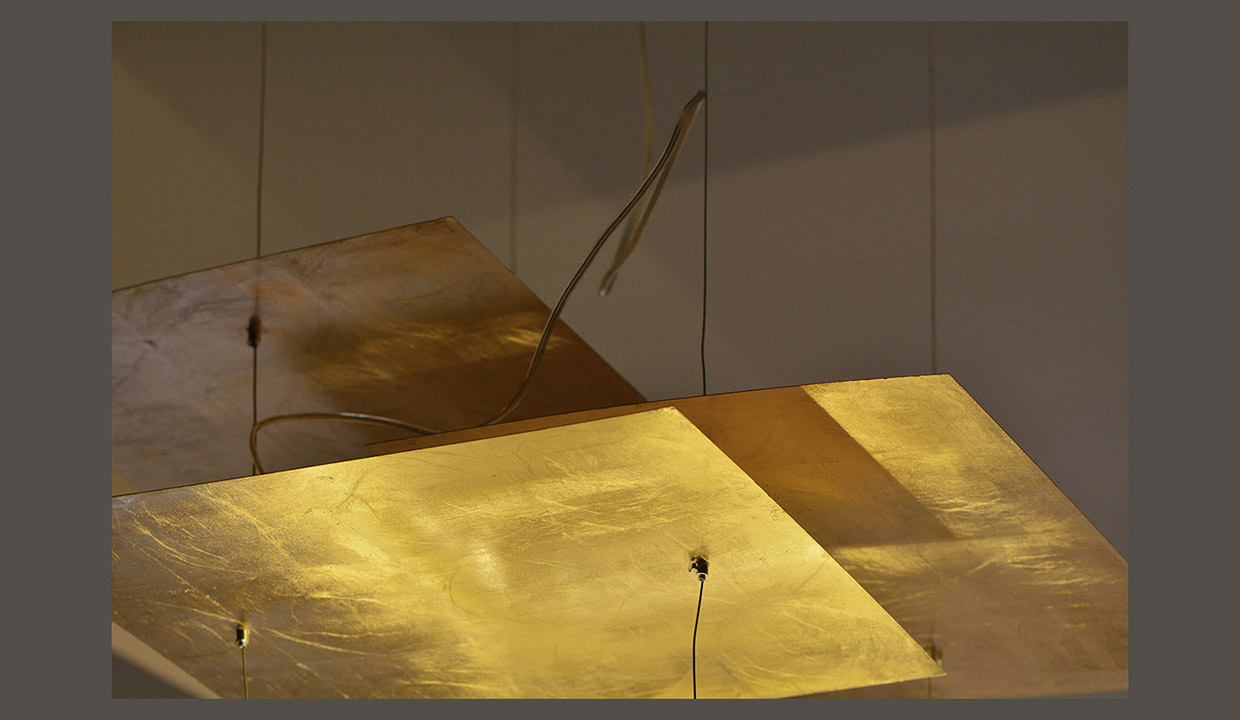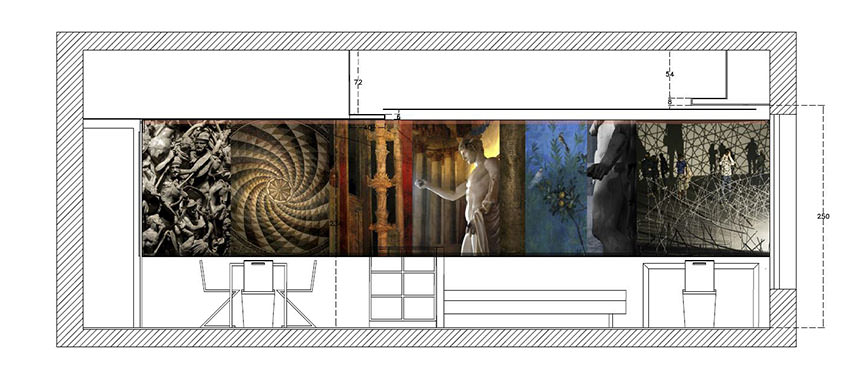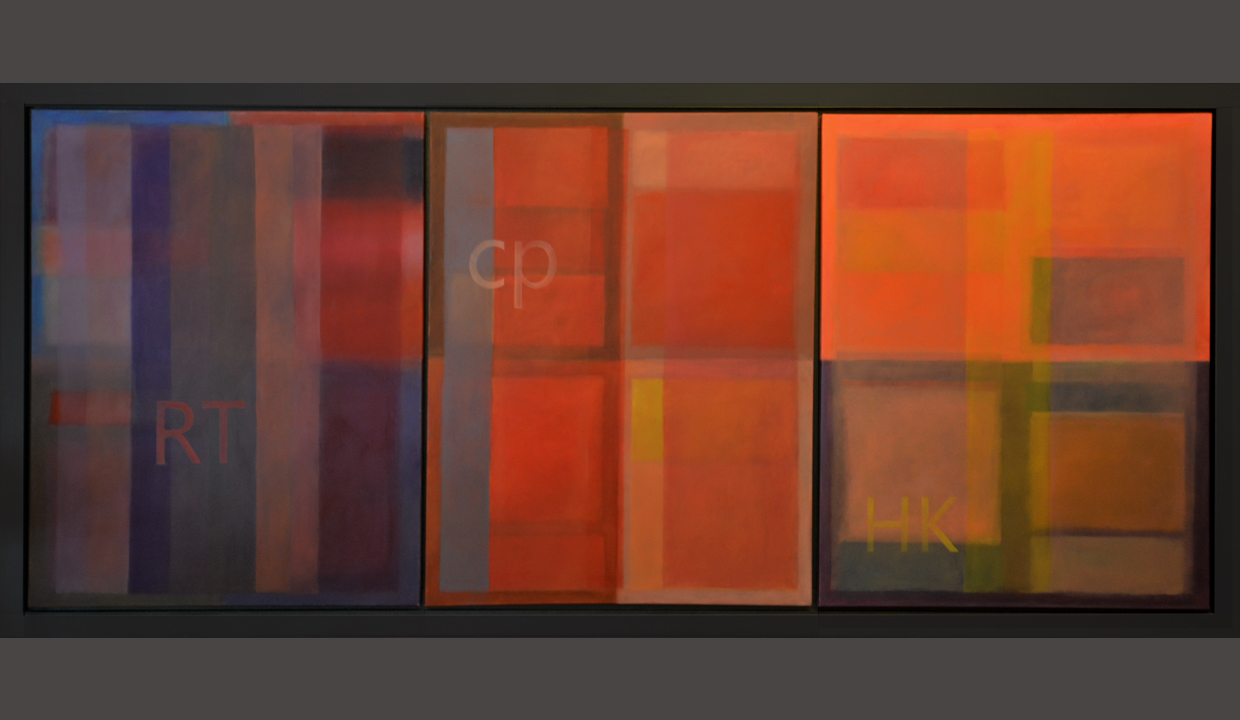Light has always been crucial in defining architectural volumes and in the management of functions that need to take place within them. It is not only a question of aesthetics, but is above all a matter of ‘perception’ not only of the spaces but also of the very quality of the light itself. The latter is always changing depending on the functions that take place in an environment: Sometimes it is “symbiotic” imposing itself as something independent (the luminaire) appearing as an independent sculpture, at other times it is anonymous by hiding and lowering its intensity.
In designing exterior architecture but especially the interior of buildings. I have always striven to give great importance to artificial light according to the concepts just expressed. Just as important to me has been natural daylight in accentuating or diminishing an architectural environment.
In this way the various “lamps” or lighting systems which have served to resolve the problems face by each individual project, have been born.
The ‘Wissel 8’ for example was intended as a Calderiano-style sculpture, successfully solving a technical problem and a design requirement: to render a warm and welcoming the LED light that would be emitted to illuminate the diners who would find themselves around a table dining. The use of steel coated with gold leaf mounted by hand according to an ancient tradition has solved the problem by reflecting downwards the strong white LED light that was emitted from the illuminating body underneath. Gold has often been used in a decorative manner by many designers of lamps, but in this case the decoration is secondary to the functional requirements.
On the other hand, the intention of the ’Wissel 4′ is to keep the white light of LED lamps, which, however, is filtered by opaque plexiglass sheets and then reflected onto opposite areas of the environment in order to give the impression that these had their “own light”
In many other cases, led strips are hid in false ceilings, under steps, behind a mirror or a cut in the wall and in turn they themselves become architecture, highlighting gaps that relate to the environment or highlighting volumes which that characterise the environment.
Light scapes
La luce è sempre stata fondamentale nella definizione dei volumi architettonici e nella gestione delle funzioni che si devono svolgere all’interno di essi. Non è solo una problematica estetica, è soprattutto una questione di ‘percezione’ non solo degli spazi ma anche della qualità stessa della luce. Essa è sempre mutevole in relazione delle funzioni che si svolgono in un ambiente: talvolta è ‘dialogante’ nel senso che si impone come oggetto autonomo (il corpo illuminante) mostrandosi come una scultura indipendente; altre volte invece si rende anonima nascondendosi e abbassando la sua intensità.
Nel disegnare l’architettura esterna ma soprattutto quella interna degli edifici, mi sono sempre imposto di dare molta importanza alla luce artificiale secondo questi concetti appena espressi, non meno dell’importanza che per me ha sempre avuto la luce naturale diurna nel qualificare o squalificare un ambiente architettonico.
Nel corso degli anni a questo scopo sono nate delle ‘lampade’ o dei sistemi illuminanti che potessero risolvere le singole problematiche di ogni progetto.
La ‘Wissel 8’ per esempio doveva essere una scultura di gusto Calderiano che, mostrandosi, risolvesse un problema tecnico e un desiderio progettuale: rendere calda ed accogliente la luce led che sarebbe stata emessa per illuminare i commensali che si sarebbero ritrovati intorno ad un tavolo da pranzo. L’uso dell’acciaio rivestito di foglie d’oro montate artigianalmente secondo la tradizione antica ha risolto il problema riflettendo verso il basso la forte e bianca luce led che veniva emessa dal corpo illuminante sottostante. L’oro è stato spesso usato in maniera decorativa da molti progettisti di lampade, ma in questo caso la decorazione è passata in secondo piano rispetto alle esigenze funzionali.
Al contrario la ‘Wissel 4’ vuole invece conservare la luce bianca delle lampade led, ma questa viene filtrata da lastre di plexiglass opache e poi riflessa su porzioni di ambienti opposti che dovevano dare l’impressione di emettere ‘luce propria’.
In molti altri casi le strisce led si nascondono nei controsoffitti, sotto i gradini, dietro uno specchio, in un taglio nel muro e di volta in volta diventano esse stesse architettura, evidenziando spazi vuoti che si relazionano con l’ambiente o evidenziano volumi ed elementi che lo caratterizzano.








Leds are a great invention but have to be used wisely : filtering o hiding them is by far the best way to have great results
Love the idea of using gilt for the dinner table pendant. It’s warm and luxurious and reminds me of an opulent Venetian palazzo.
The gold plated lamp is gorgeous : there are some prior and remarkable examples (Ingo Maurer) but using gold as a reflection surface seems to be very functional besides just pleasant to look at : in fact, gold has always been used and it is still used in modern times.
I know very well your works, you are the prince of the lights 🙂